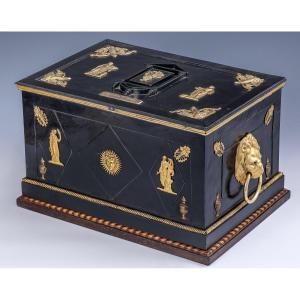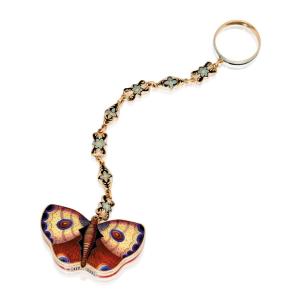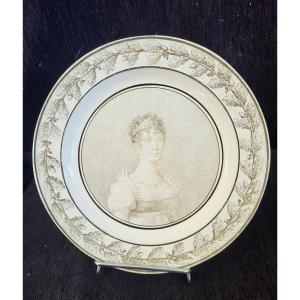Early 19th century. Mediterranean coral.
h. 7 cm.
From the late Middle Ages, coral became commonplace in daily use as a common object and a precious element. Alongside the simple adornment that the common woman wore, as an amulet and prophylactic tool, to her child, there was a rich production in the field of goldsmithing, ranging from table accessories to furnishings, to personal ornamentation, in which coral appeared mounted with gold, silver, enamels, hard and precious stones. Only the numerous descriptions of objects reported by archival and documentary sources remain of such manufactures (we recall, for example, the wedding trousseaus rich in coral objects of Beatrice d'Este, Bona di Savoia, Eleonora d'Aragona, as well as the inventories of the goods of the dukes of Berry, Orleans, and Burgundy); descriptions sufficient, however, to give us an idea of how its appreciation was now widespread among both the bourgeois class and the highest nobility.
Among the most widespread everyday objects were table cutlery, usually adorned at the handle end with a simple sprig of coral, more rarely with shaped or engraved corals. This custom probably originated from the ancient popular belief that attributed to coral the property of revealing the presence of poisons in dishes. Although sporadically, knives, spoons, and similar forks continued to be made until the 18th century. Examples of creations of everyday objects with coral in the early 19th century are not many but certainly not lacking.
The set of coral handles presented here is perfectly in line with the decorative language in vogue in France and soon assimilated throughout Europe: the Empire Style, of clear neoclassical descent, desired by Napoleon. Certainly made to order for a wealthy and tasteful clientele, the set of cutlery handles presented here was presumably intended for a military officer of the highest rank. Carved in the round in complex and elegant ensembles, they evoke the memory of the valorous armies of antiquity and warrior-heroes, configuring themselves as refined field cutlery. The choice of precious material seems to be linked to the symbolic, apotropaic, and auspicious values of coral, which was already used in ancient times to decorate weapons. The formal accuracy, the originality of the composition, the quality of the coral, and the refined engraving technique make these cutlery handles a unique object of rare and precious elegance.






































 Le Magazine de PROANTIC
Le Magazine de PROANTIC TRÉSORS Magazine
TRÉSORS Magazine Rivista Artiquariato
Rivista Artiquariato